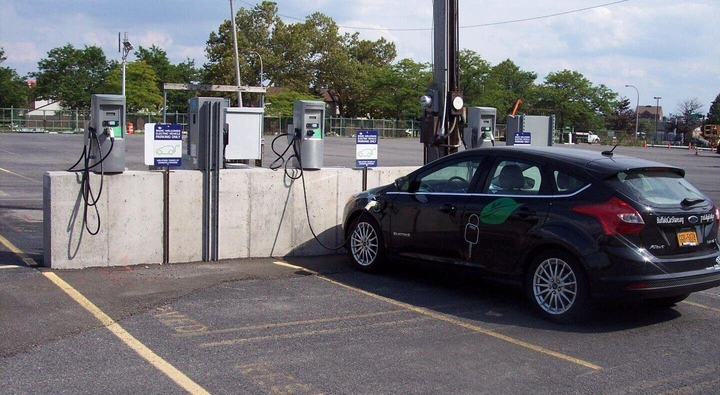
View pictures in App save up to 80% data.
A myriad of innovative automobile engines is being developed, with their inventors aiming to make a significant impact in the commercial sector soon. These engines utilize alternative fuels such as methanol, ammonia, hydrogen, nitrogen, and intriguingly, lithium. Additionally, one company has designed a unique motor that resembles a donut and functions within the wheel structure.
H2
The Indian state of Kerala is pioneering the use of “green” hydrogen in transportation. The Kerala Green H2 Valley project, initiated by the Agency for New and Renewable Energy Research and Technology (ALERT), is creating a complete hydrogen value chain to showcase how hydrogen can reduce emissions across industries.
Kerala is opting for hydrogen-powered heavy-duty trucks instead of battery-electric models to replace diesel trucks, as these vehicles can cover long distances while maintaining their load capacity. The Kerala State Road Transport Corporation is prioritizing the development of hydrogen-powered buses. Additionally, the Kochi Water Metro project has incorporated hydrogen boats into its comprehensive transportation framework.
Although these ambitious plans are in place, India will require hydrogen refueling infrastructure, with each station costing approximately US$2 million—significantly higher than the expense of setting up charging stations for battery-electric vehicles. Additionally, enhancements are necessary for heavy-duty hydrogen fuel cell systems.
The U.S. Department of Energy recently boasted that a hydrogen-powered truck traveled over 1,800 miles on a single fill-up of hydrogen fuel. The truck – the H2Rescue – is a prototype developed by DOE in partnership with the U.S. Army, the Department of Homeland Security, FEMA, the Naval Research Lab, and Accelera by Cummins. No word yet when or even whether the experimental truck will be placed into real-world service.
The truck, powered by a Cummins Accelera hydrogen fuel cell engine paired with a 250-kilowatt traction motor, is being designed for use in emergency response, military, and utility scenarios. With an initial 386 pounds of hydrogen in its tanks, the truck traveled California roads during rush-hour traffic at speeds between 50 and 55 miles per hour.
Methanol
German engine manufacturer MAN Energy Solutions is developing a new dual-fuel methanol engine for the maritime industry. The MAN 175 DF-M is expected to be available for retrofitting into its successful MAN 175D high-speed engine by the end of 2026. Caterpillar Marine is also working on a dual-fuel methanol engine model set for field tests in 2026.
The MAN dual-fuel engine comes in configurations featuring 12, 16, and 20 cylinders, all boasting an internal diameter of 175 mm. It is designed for mechanical or electrical propulsion and onboard power generation, operating within a power range of 1,500 to 2,000 rpm. This engine is particularly suited for ferries, offshore supply vessels, tugboats, and various other working vessels. Additionally, tailored versions can be adapted for superyachts and other specialized marine uses.
The dual-fuel engine has received the “fuel ready” certification from Det Norske Veritas, a prominent global organization based in Norway that specializes in risk management and quality assurance. This DNV certification confirms that the engine is designed for both diesel-electric and diesel-mechanical propulsion, featuring the integration of dual-fuel methanol technology.
Nitrogen
The Dearman Engine Company has been developing and researching a liquid nitrogen engine solution for over a decade. Beginning in 2014, DEC embarked on a project in collaboration with Ricardo, E4tech, MIRA, and leading British academic and research institutions to develop a zero-emission piston engine that runs on liquid nitrogen with the exhaust being cold air.
DEC states that liquid nitrogen offers advantages such as a straightforward design and low manufacturing expenses, as it leverages much of the current powertrain supply chain. Additionally, the engine demands very little maintenance and maintains its capacity throughout its operational life.
DEC claims that the energy provision of nitrogen engines is 700 times more powerful than that of hydrogen. H2 engines use either combustion or electrochemical reactions, both of which must overcome problems with energy density and storage. But pressurized nitrogen turns turbines directly with minimum energy loss.
The nitrogen engine produces no tailpipe emissions and has minimal greenhouse gas emissions overall. Its refueling time is quick, similar to that of gasoline or diesel engines. Additionally, the engine can utilize waste heat from the coolant loop, allowing it to work in tandem with other waste heat recovery systems. It is capable of delivering both propulsion power and cooling simultaneously.
Additional content from this segment.

View pictures in App save up to 80% data.

View pictures in App save up to 80% data.

View pictures in App save up to 80% data.
DEC states that this technology is particularly significant for industrial uses, mining operations, inland waterways, and urban infrastructure. The sole byproduct is cold air, produced by the vaporization and expansion of cryogenic liquids. It harnesses ambient or low-grade waste heat as an energy source, with the cryogen serving as both the working fluid and the heat sink.
Lithium
German researchers from the University of Kaiserslautern-Landau have introduced a prototype quantum engine powered by lithium. The engine operates by manipulating the quantum states of lithium atoms to generate energy.
The findings from the university's research underscore the engine's ability to revolutionize energy production, paving the way for innovations such as highly efficient quantum batteries that offer longer lifespans and quicker charging times. This technology not only shows potential for engine applications but could also transform energy generation and consumption practices across various sectors.
To ensure the engine operates efficiently, lithium atoms need to be kept at temperatures close to absolute zero. This is essential to reduce thermal disturbances and achieve accurate control over their quantum states. By utilizing magnetic fields, the atoms can be transitioned between the two quantum states of lithium—fermionic and bosonic. This transition is a vital part of the energy conversion mechanism.
Scientists have discovered groundbreaking techniques for managing the quantum states of fermions and bosons. Unlike fermions, which are unable to exist in the same quantum state at the same time, bosons can occupy identical states. The study revealed a strategy to switch between these states to enhance engine efficiency; however, the current prototype has only reached a 25% efficiency level, which is below that of traditional thermal engines.
The Doughnut Engine
Donut Lab, a manufacturer of electric motors, has created an innovative donut-shaped in-wheel motor specifically for electric vehicles. This unique motor features a central opening, enabling it to seamlessly integrate into the wheel itself.
The donut motor is designed to fit within a 21-inch hoop, producing an impressive 845 horsepower and 3,171 pound-feet of torque, all while weighing just 88 pounds. By eliminating drivetrain components, half-shifts, and various other parts, the overall weight is significantly decreased. Additionally, the absence of a motor in the vehicle's body creates more room for enhanced seating and increased cargo space.
Donut Lab asserts that its motors can be produced at costs up to 50% lower than standard options. However, the in-wheel design results in increased weight compared to traditional wheels. This additional unsprung mass (weight situated below the suspension) could adversely affect both handling and braking performance.
The firm is in the process of creating a variant of its donut motor specifically for semi-trucks, which will deliver 200 kW of power and 2,212 pound-feet of torque at each wheel. This innovative technology is currently in use on the roads in several electric bicycles produced by Verge Motorcycles, the parent company of Donut Lab.
BMW has also created its own in-wheel electric motor in collaboration with DeepDrive, a technology company based in Munich. This innovative in-wheel motor from BMW, which is still undergoing testing, boasts a distinctive dual-rotor configuration.
This selection only begins to explore the burgeoning automotive technologies emerging globally – yet all of these reports were published within a two-week span at the close of 2024. It is the forces of innovation and free markets, rather than government regulations, that are propelling the future of transportation forward.